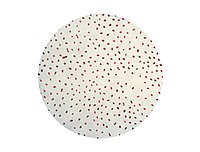
Photo from wikipedia
ABSTRACT Purpose To provide a comprehensive review of rare and emerging micro-organisms causing infectious keratitis. Material and Methods A literature search was performed using PubMed Medline, Cochrane Library Database, EMBASE… Click to show full abstract
ABSTRACT Purpose To provide a comprehensive review of rare and emerging micro-organisms causing infectious keratitis. Material and Methods A literature search was performed using PubMed Medline, Cochrane Library Database, EMBASE and Scopus (1960 onwards), using the terms: keratitis caused by rare pathogens; mycotic keratitis; fungal keratitis; bacterial keratitis; infectious keratitis; infective keratitis; atypical fungal keratitis; fungal keratitis caused by rare organisms; fungal keratitis caused by rare ocular pathogen; atypical bacterial keratitis; bacterial keratitis caused by rare organisms; bacterial keratitis caused by rare ocular pathogen. All relevant articles were included in this review. Results A total of 1232 articles matched our search strategy of which 124 articles were included in this mini-review. The rare and emerging bacteria causing keratitis include atypical mycobacteria, Nocardia spp., Chrysebacterium spp., Delftia acidovorans, Kocuria spp., Enterococcus spp., Bartonella henslae, Achromobacter spp. and others. The rare and emerging fungi causing keratitis include Pythium spp., Alternaria spp., Acremonium spp., Cladosporium spp., Curvularia spp., Bipolaris spp., Microsporidia spp., Pseudallescheria spp., Colletotrichum spp., and others. The clinical presentation of these cases is variable. While a few organisms produce characteristic clinical features, rest present similar to bacterial or fungal keratitis with variable response to routine treatment. A strong degree of suspicion is therefore essential for its diagnosis. Special investigations like polymerase chain reaction, gene sequencing, mass spectroscopy and enzyme-linked immunosorbent assay are required for accurate identification of these organisms. Culture-sensitivity is extremely useful as drug resistance to routinely used anti-microbial drugs is common. Prognosis is usually poor for keratitis with Pythium spp., Pseudallescheria spp., Arthrographis spp., Purpureocillium spp., Kociria spp. and Achromobacter spp. Conclusion Keratitis caused by rare and emerging micro-organisms must be suspected in cases where the infection runs an unusual course or shows a poor response to standard anti-microbial drugs. Early diagnosis and timely treatment hold the key for a good outcome.
Journal Title: Current Eye Research
Year Published: 2019
Link to full text (if available)
Share on Social Media: Sign Up to like & get
recommendations!